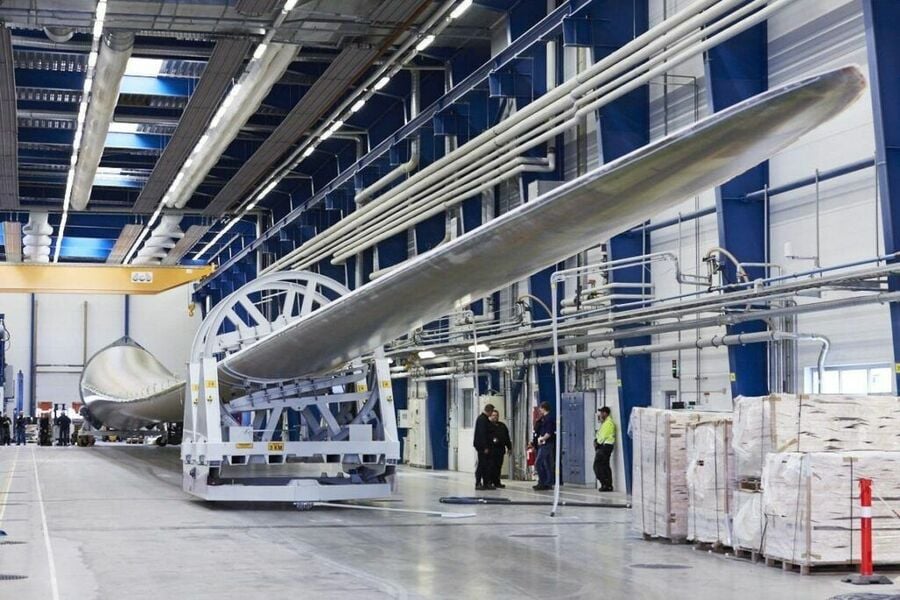Testing of the world’s longest wind turbine blade
The LM 88.4 P test blade arrived at BLAEST on 1st July, 2016, after being transported from LM Wind Power’s Pilot Plant in Lunderskov. In four weeks the static test was successfully completed.
The LM 88.4 P demonstrated that it can withstand extremely high winds. In the next few months a fatigue test involving the shaking the blade up and down several million times was conducted to determine the durability, longevity, and the ability to survive 25 years of offshore operation.
For the rest of 2016, two LM 88.4 P blades will be tested simultaneously: one at LM Wind Power’s Lunderskov Test Centre, and one at the BLAEST test facility. The parallel testing program will provide results over a 7-month duration – to ensure that the blade meets its design requirements, in half the time normally required for testing.

The BLAEST test centre is co-owned by the leading wind technology institutes Force Technology, Technical University of Denmark (DTU – Risø) and Det Norske Veritas DNV Germanischer Lloyd. BLAEST operates several test stands for testing the strength and fatigue of wind turbine blades.
BLAEST Test Centre has been using Gantner Instruments strain gauge technology for several years. Several systems with up to 100 channels per measuring setup record the strain signals dynamically, synchronously and precisely. The modules Q.bloxx A116 and the test controller Q.station were used.
Testing is performed in cooperation with our Danish partner IPC Teknik ApS.
More articles
6 Tips for Stress-free Strain Measurement during Fatigue Testing of Aircraft Structures
Strain is the single most important measurement during aircraft fatigue testing. The accuracy and precision of strain gauge measurements is of the greatest importance to exactly determine the durability and damage tolerance of a structure. The higher a structure is in the ‘pyramid of test’, the higher the test complexity, number of measurement channels, and data produced. On top of that the risk in terms of time delay and cost associated to a test program increases more than proportional with the increase in test complexity. Here are six tips to help you choose the right data acquisition system for your fatigue test:
Read more...Q.bloxx A105 CR Cryo Module with Extended Range
Cryo Technology is a rapidly growing market and therefore more and more new sensor kinds appear. A clear trend is that these cryogenic temperature sensors move to higher resistance. With Gantner’s cryo module – the Q.bloxx A105 CR – a measurement range of up to 25kohms is now possible. The module is available as standard DIN rail module, or as Q.brixx/Q.raxx with 4 times 4-pole-LEMO (ERA.1S.304.CLL).
Read more...Metro de Madrid Stays Ahead of Brake Problems
METRO DE MADRID is a railway company that provides public transportation services to Madrid and its metropolitan area. Currently, it is the most extensive metro network in Spain, with a length of 294 kilometers. With 302 stations, it is the third-largest network in Europe by kilometers, after those in London and Moscow. It has 2400 trains and makes an average of 650 million trips a year, with 350 million passengers.
Read more...Austrian Railways Measurement Vehicle Detects Signal Magnets Using the Q.station Test Controller
The Austrian Federal Railways (ÖBB) continuously checks the quality of its network using special measurement vehicles. Measurement data is required as the basis for maintenance and renovation work; a precise geographic reference data is therefore important.
Read more...